Business Glossary
Business glossary's goal is to provide unique definitions of your business data available to the whole organization in order to avoid misunderstandings on the definition of your data.
The business concepts are managed based on a predefined workflow which relies on configured permissions. The diagram below shows the application's own workflow for publishing concepts as well as an example of roles and the permissions that each of them could have.

On the Business Glossary module you can view and manage business concepts. There are these submenu options in this module:
Concepts: this view displays published business concepts. You may have additional views for published concepts based on the type of concept if the administrator has configured it when defining the templates.
Drafts: this view displays business concepts that are either in Draft, Reviewing or Rejected status and require an action from the user. You will only see those concepts you have permissions to carry out any of the required actions (send for approval, publish, reject or rectify).
Deprecated: this view displays concepts that have been archived. You can either restore them back to published status or permanently delete them.


On all views you have the following options:
Search for concepts: The search is performed within all the content of the concepts showing those for which the search returns some results as you fill in the search field.
Filter: It will allow you to filter by domain, status, type (template) and linked to data fields, as well as all the fields configured in the business concept template as a list of values. Filters will only be shown for those fields in which there is more than one value.
Save filters: you have the option to save your most used filters. In order to do that just click on Save and give it a name and the combination of filters awill be displayed as a quickfilter everytime you come to this screen.
Download: The list of concepts from the search result can be downloaded in Excel format.
New Concept: Available only to users with the corresponding permission to create a concept in a domain.
Sort results: the list of concepts or search results by any of the columns displayed on the screen just by clicking on the header.
New Concept
This option is only available to users with permission to "Create new concepts" in a Domain.
Domain: Once they access the "New Concept" form, they will be able to choose a domain in which the concept will be created. Only those domains in which the user has permissions to create a concept will be available.
Template: Name of the business term.
Template: Depending on the client's installation, one or more templates may be available.
In case of only having a template for business concepts, the field will not appear to be selected and the complete form will be automatically displayed.
If you have more than one template, the "Templates" field will be displayed so that you can select the type of concept you want to register. Once selected, the configured dynamic form will be loaded through the corresponding template.
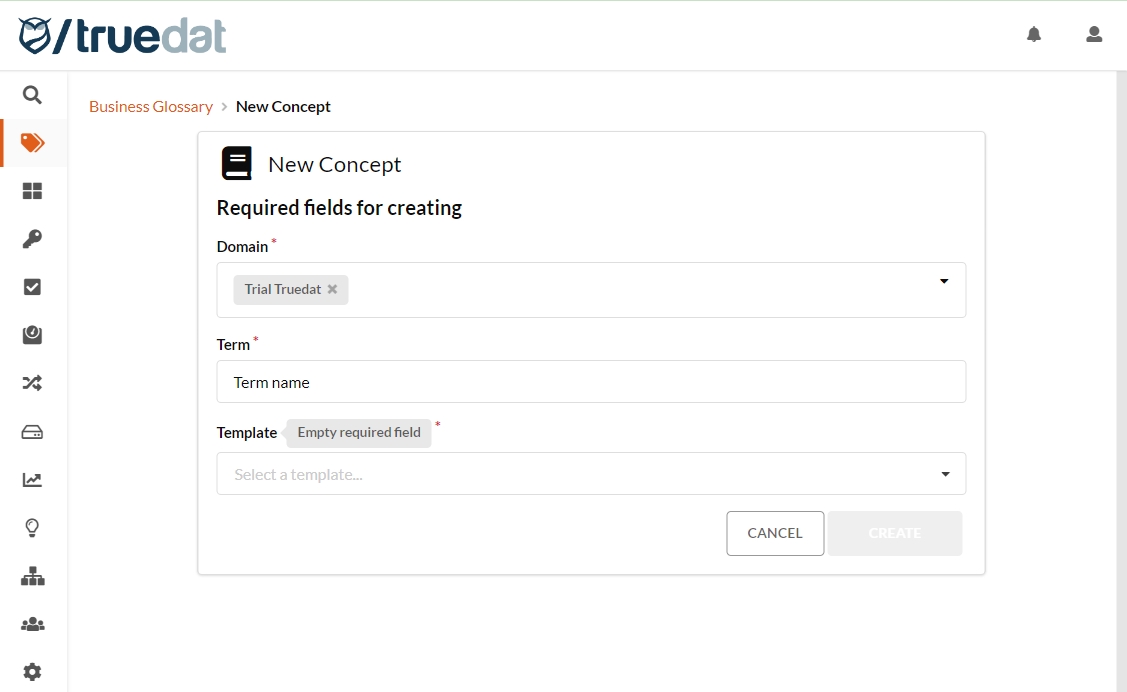
Depending on the template, the corresponding form will be displayed. If there is only one template available for the selected domain, it will be automatically displayed.
The main mandatory fields are: domain, template and concept.
The rest of the fields will depend on the configuration of each installation.
When the form is filled in, click on "Create" to create the new business concept in draft status.
Example of a concept where all the mandatory fields are completed:
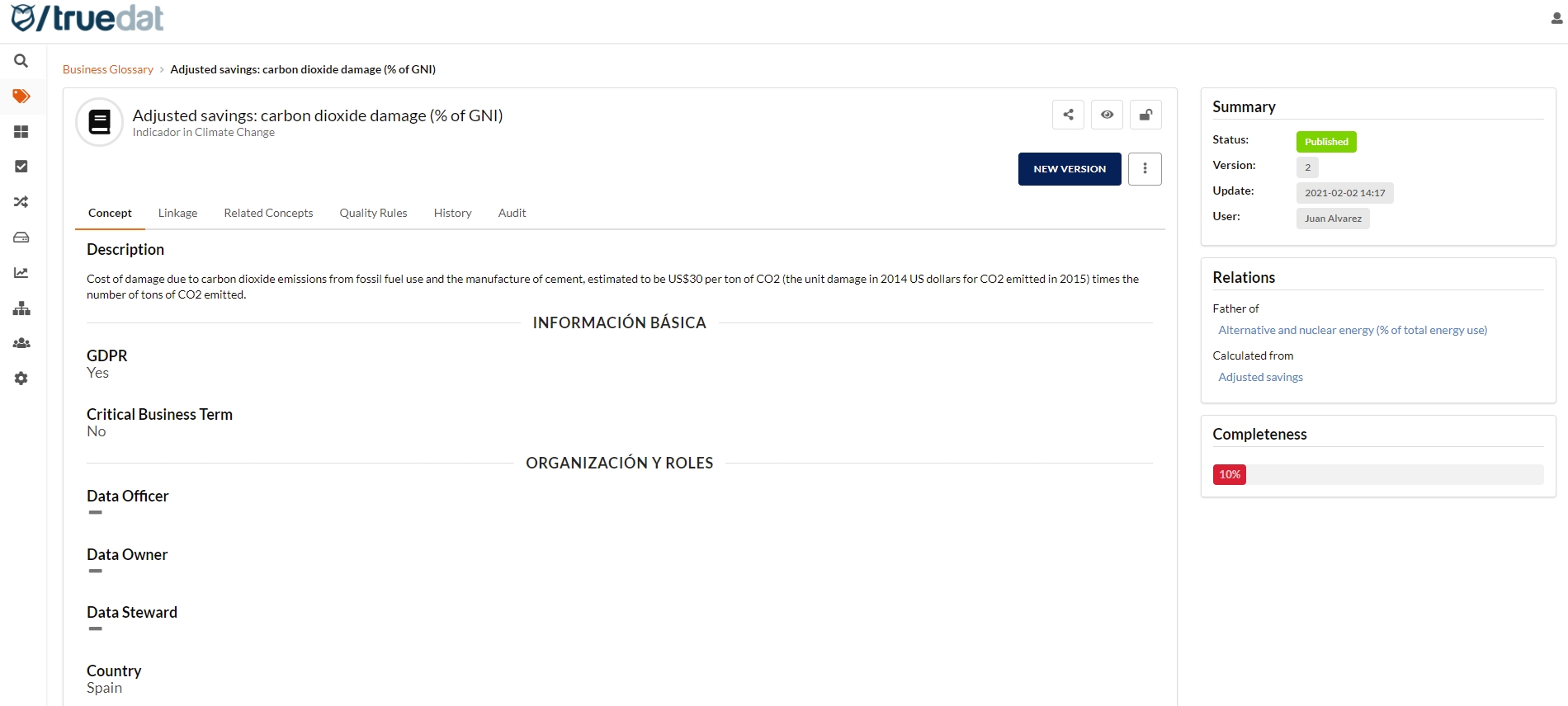
Example of a concept where some mandatory values are missing, it appears as Draft Not completed and has the Request approval button disabled.
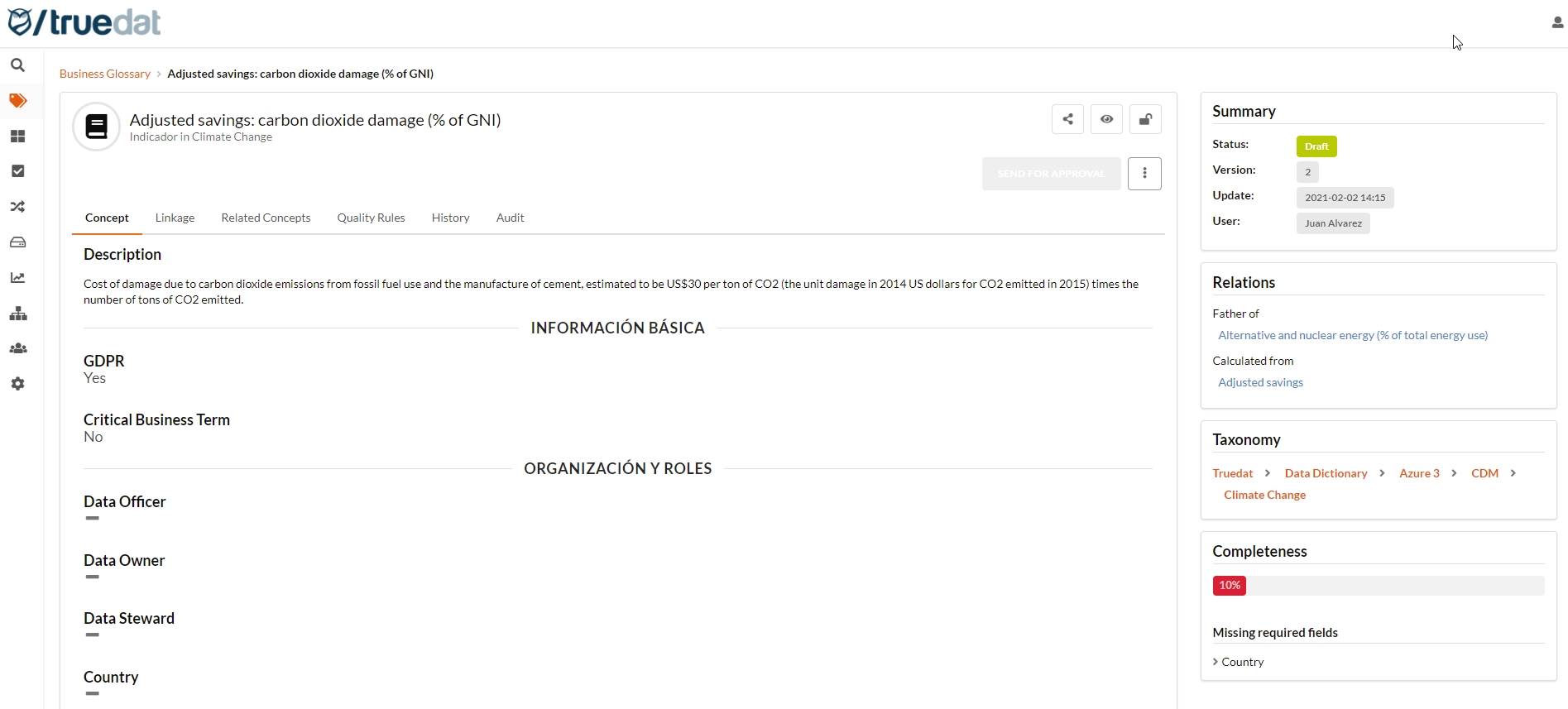
Mandatory fields are marked with a red asterisk so you can easily identify which fields have to be filled in in order to publish the concept.
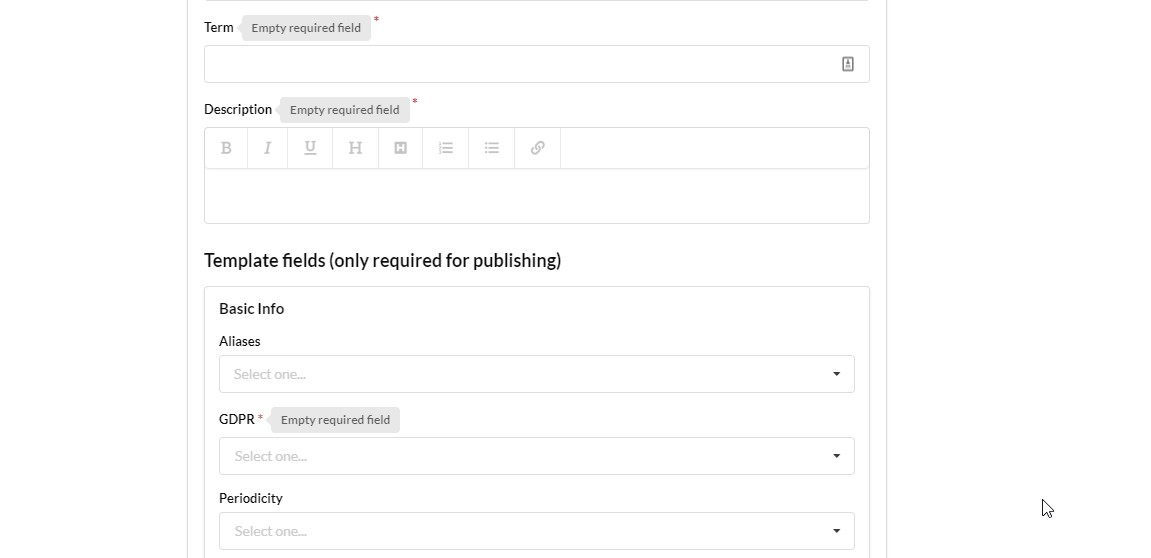
The template may include some additional fields that although not mandatory to be able to publish the concept, they are desirable to have a complete definition of the business concept. Only those concepts where all the mandatory and optional fields are filled in will be shown as 100% completed.
If you have several languages set up in Truedat, you will have to complete the concept form in all the languages that have been marked as required. Fields with a fixed set of values will be automatically populated and will use the translations that must have been defined by an Administrator in the Languages module.
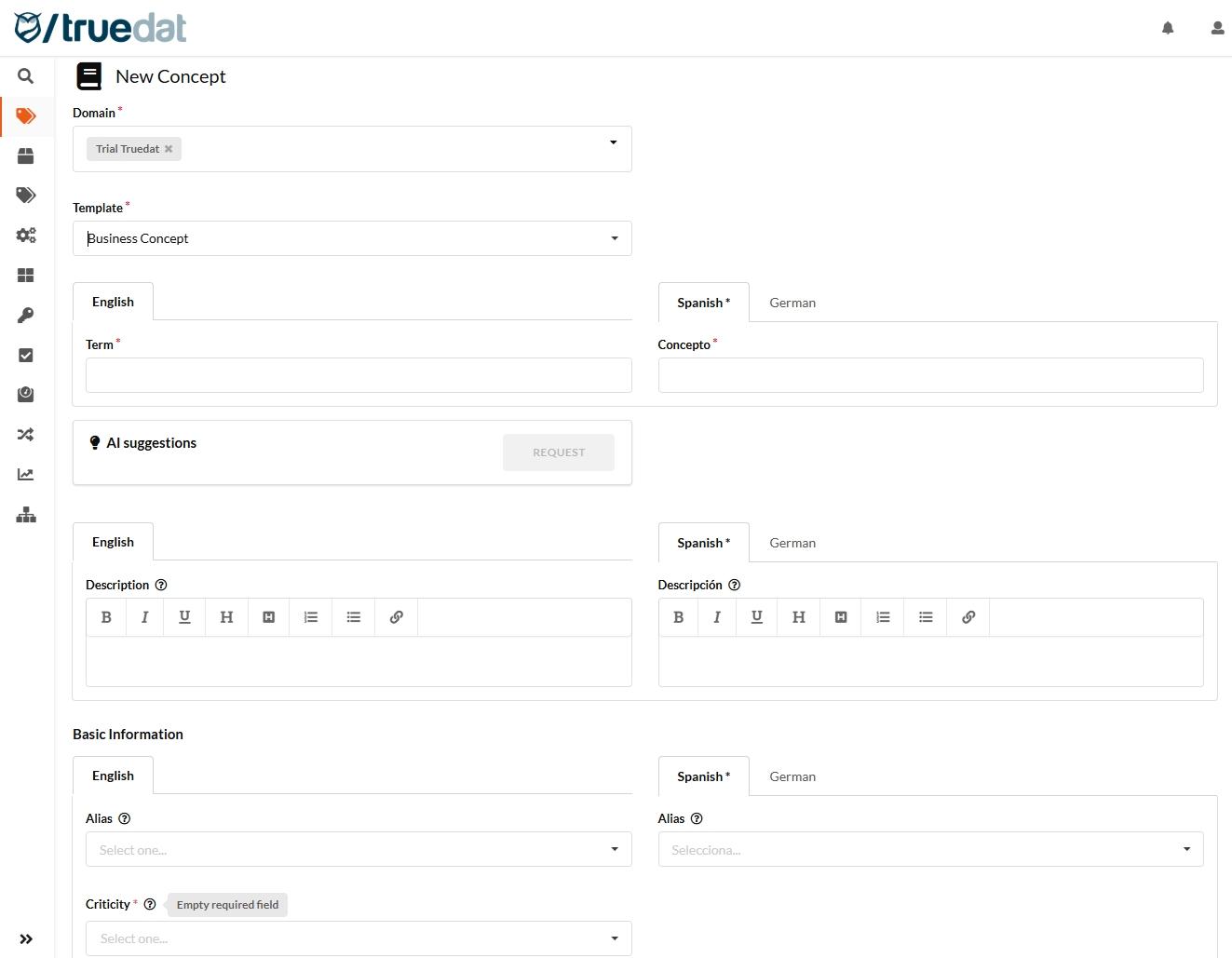
Bulk upload of concepts
There is the option to bulk upload concepts from an Excel file. You can use this option to create new concepts and/or update existing ones. The format of the file to upload concepts is the same as the download file so if you need to update concepts, you can download the file, modify the required information and load the same file.
When uploading the file, if you have permissions to publish concepts you will be given the option to create/update and save the version already in published status, otherwise, the concept will be created/updated in draft and will have to go through the standard approval workflow.

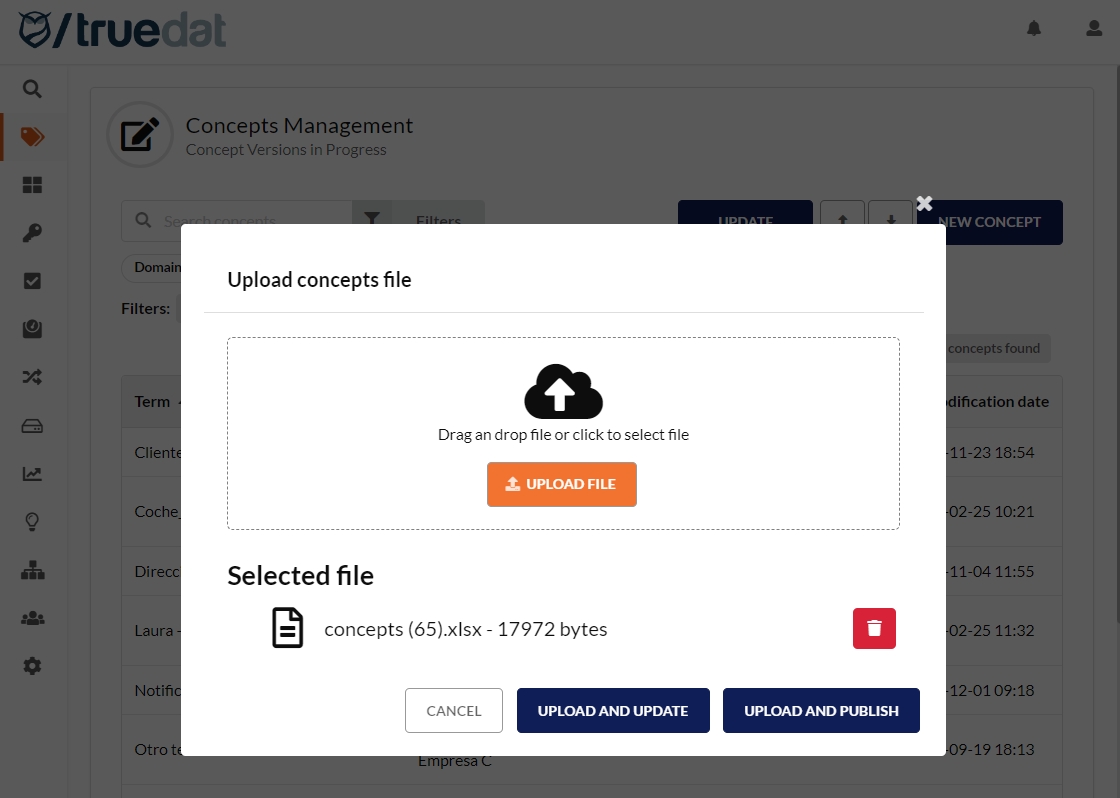
It is important to keep in mind the following:
In order to create a new concept you will have to provide the name and the domain and any field from the template that is required.
To update an existing concept, you need to make sure to include the concept id in the file.
There should be a sheet in the Excel file for each of the template types. The sheets must be named with the name (not label) of the template.
All fields must be completed with valid values:
The required fields must be completed.
Fields with a list of values must be completed with a valid value.
You can check the progress and the result of the file load in the menu option "My loads". If there is any errors you will see the details that can be exported to a csv file for you to review and correct them and try to load those records again.
Business Concept Screen - Workflow
Clicking on any business concept in any subsection of the module (published or pending) displays the following screen:
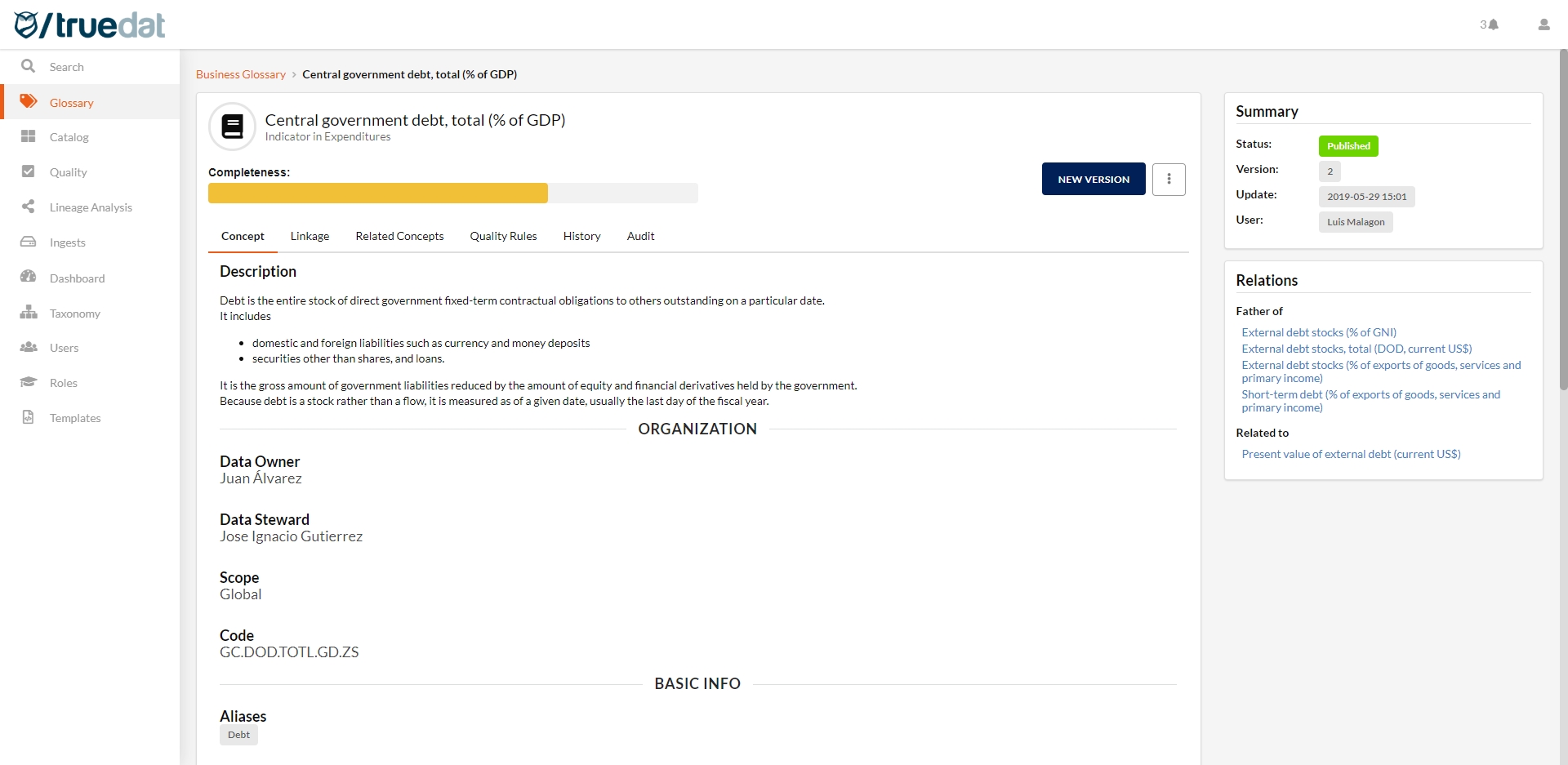
This screen is divided into 2 blocks.
Detailed information: where detailed information is displayed.
Summary: where the general information is always shown:
Status: concept status (published, rejected or under review)
Version: the version number of the concept.
Modification: the last modification of the concept.
User: the person who created or modified the concept.
Depending on the status of the concepts and user permissions, some review and publish options are shown:
For draft concepts: you can "Request approval", "Edit" or "Delete".
 Deletion removes only the version currently in draft status without affecting an earlier published version if it exists.
Deletion removes only the version currently in draft status without affecting an earlier published version if it exists.For published concepts: a "New version" can be created or you can "Archive" it.

By clicking "New version" you can edit or delete it and, depending on the workflow, send the new version for approval / publication
Clicking "Archive" will remove the business concept to remove it from the list of published concepts. This option is used when a published term is no longer used, but it has been previously published and therefore it is not allowed to completely remove it from the system. The application will notify us if the concept that we are going to archive had related information (links and quality rules).
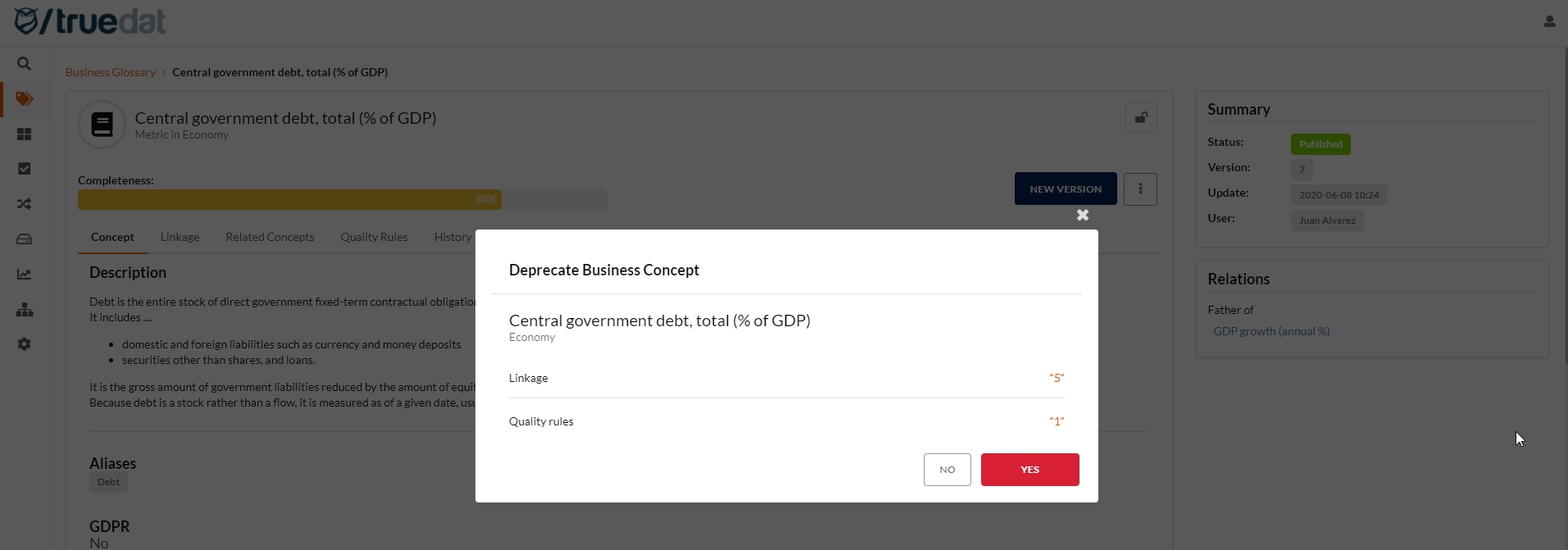
Concepts in Review state: "Reject" and "Publish" options are displayed

Clicking "Reject" will change the status of the term to "Rejected".
Clicking on "Publish" will change the status of the term to "Published" and will add the concept to the section.
Concepts in Rejected status: there are two options available "Rectify" and "Delete"

Clicking on "Rectify" will send the concept for approval, going back to the draft status.
By clicking on "Delete" the option to permanently delete the concept version will appear. This delete action will only delete the version that has been rejected. If there are previously approved versions of the concept, they will not be affected.
Additionally, each concept has a series of tabs that provide different functionalities that are explained below.
Concept
It is the main section of this module, and contains the detail of all the attributes that the user wants to display (for example: description, type, values, formulas, managers, areas, etc.)

Users may subscribe to changes on a concept, receiving an email when any changes are performed to concept: Modification, publish, structure link, new quality rule.
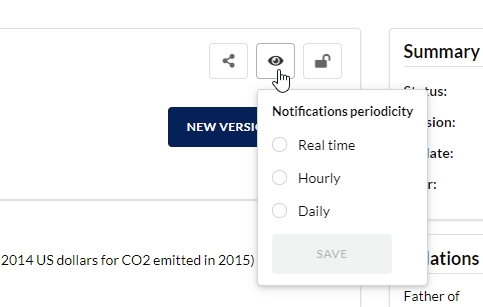
You will be able to share a concept. This action will send a notification and an email to the given users, including the corresponding comment
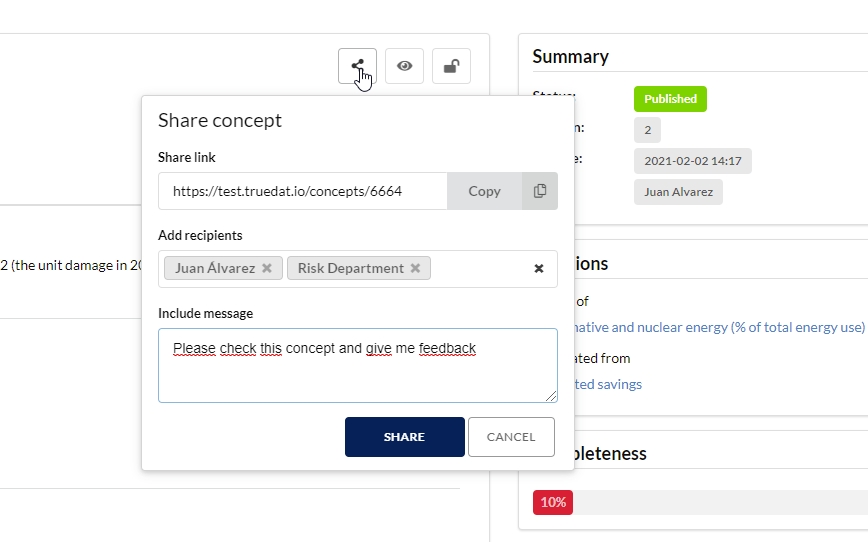
Users have the possibility to comment at the end of this section.
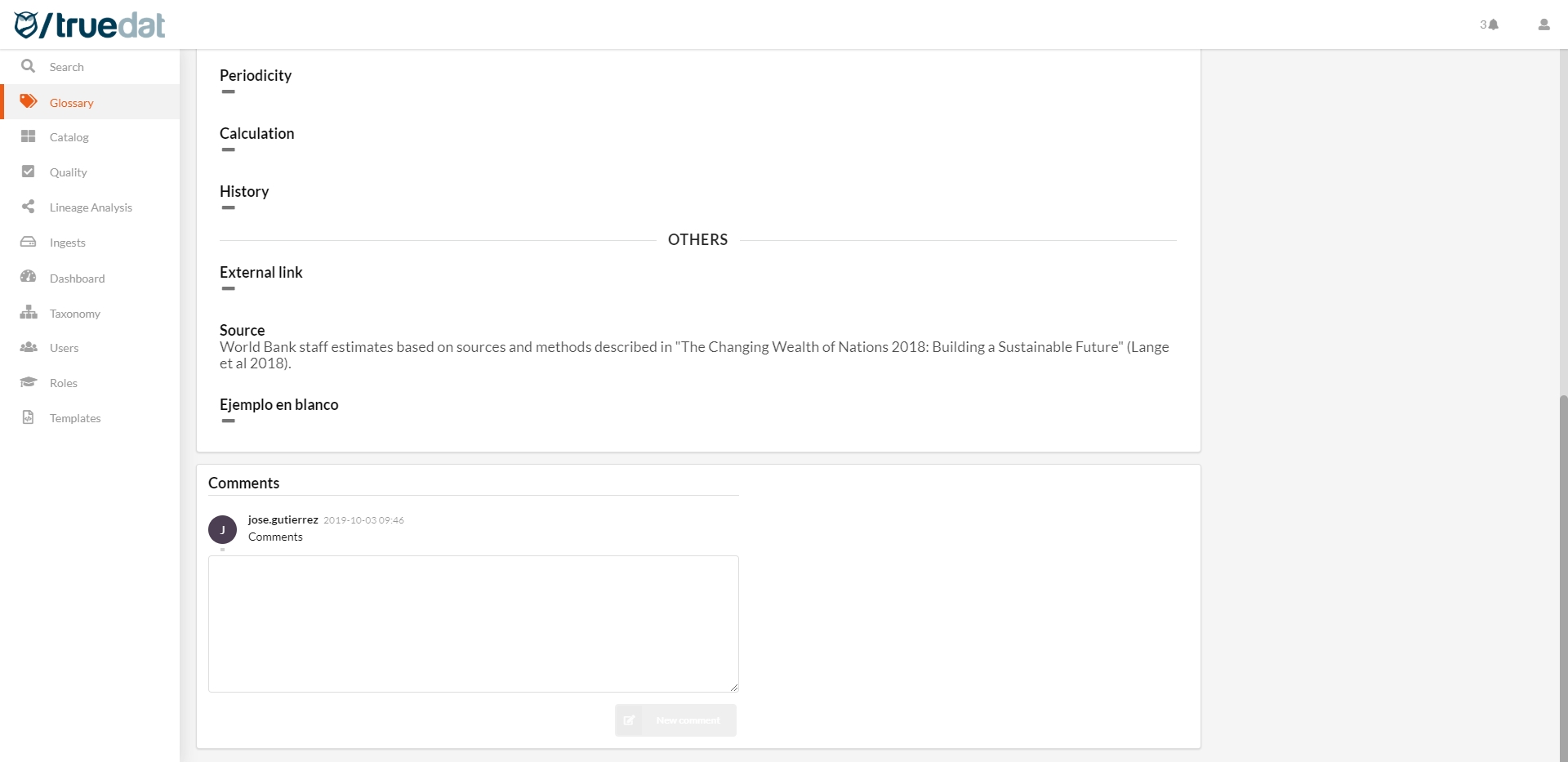
Linkage
Links of the business concept to the metadata contained in the Data Catalog are displayed in the tab.
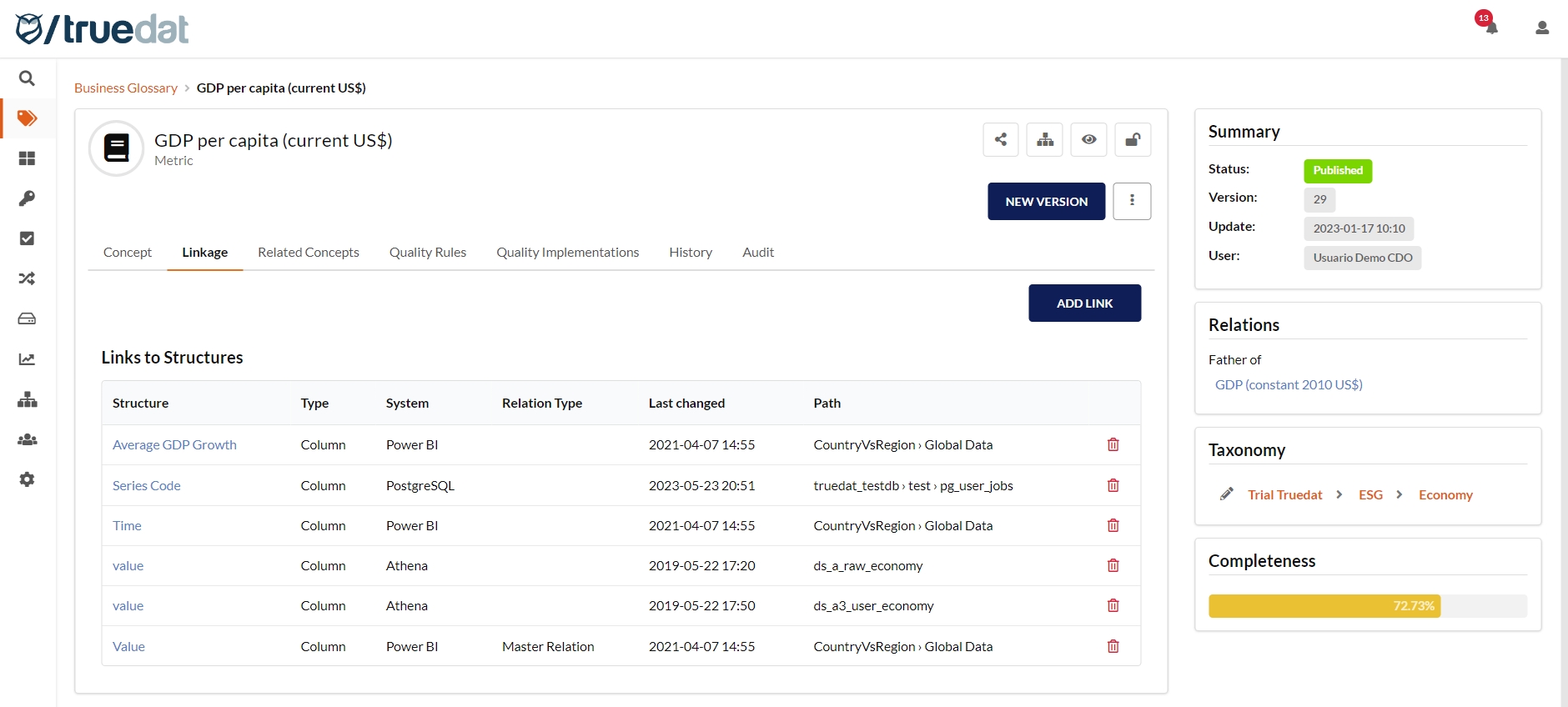
You can navigate to the Data Catalog just clicking on the name of the structure.
The option to remove a link is also available if you have permissions to do so.
For users with permission to manage links, an "Add link" button will appear that will allow us to add a new link to the data, being able to filter and search to find the field / structure to which we want to link:

Related concepts
To have this section available, you must have configured types of relationships between business concepts within the application. Once these types of relationships are configured, in this tab you can view the relationships between concepts and if you have permissions also register new relationships or delete existing ones.
A graph with all the business relationships for the given concept will be displayed which can be used as the functional model for this concept. From this graph you can be navigate to the corresponding concepts by clicking on them.
The number of levels to be displayed can be adjusted to simplify the graph. The number of levels to be displayed by default can be customised in each instalation.
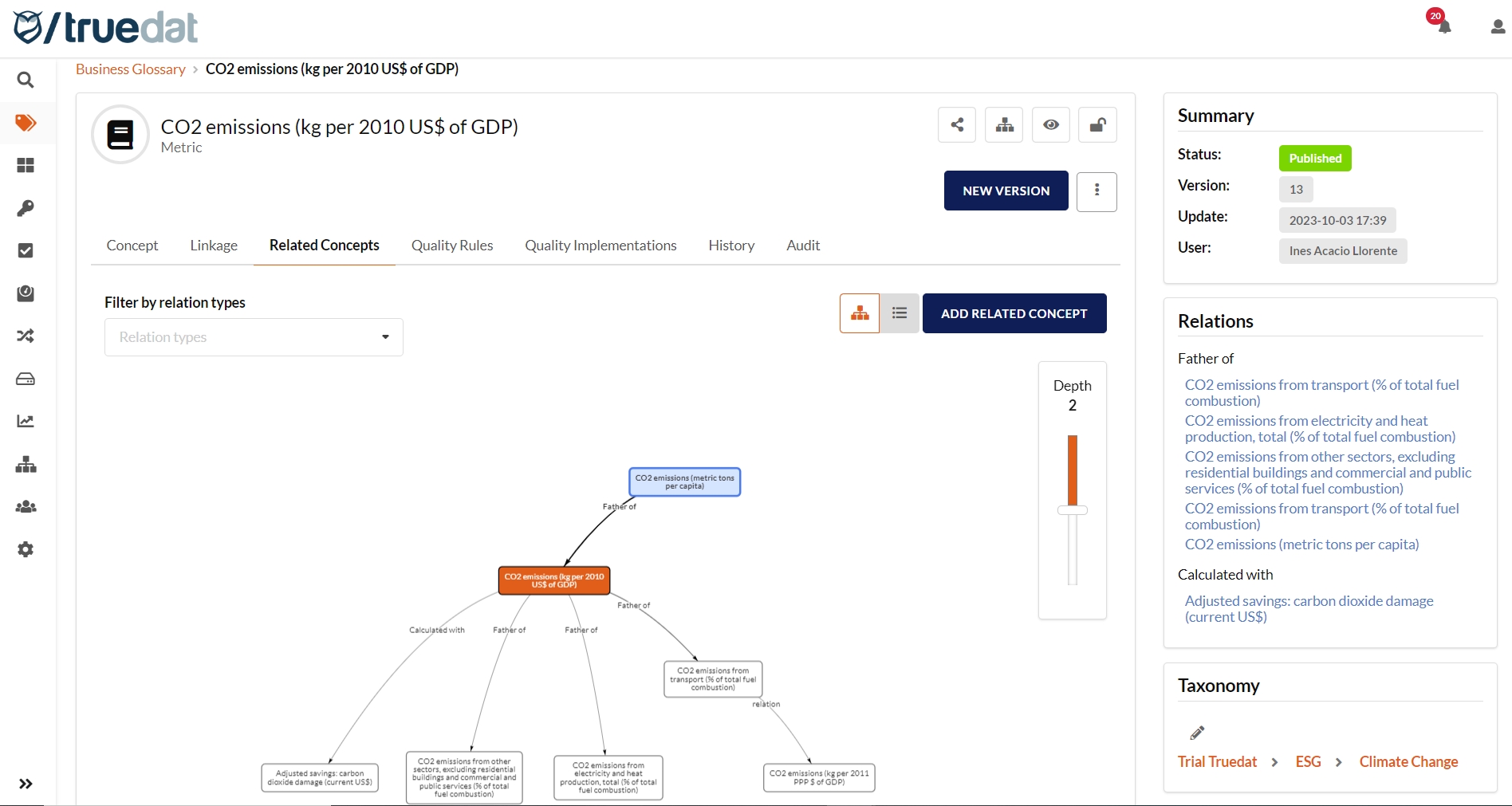
A table view of these relationships is also available:
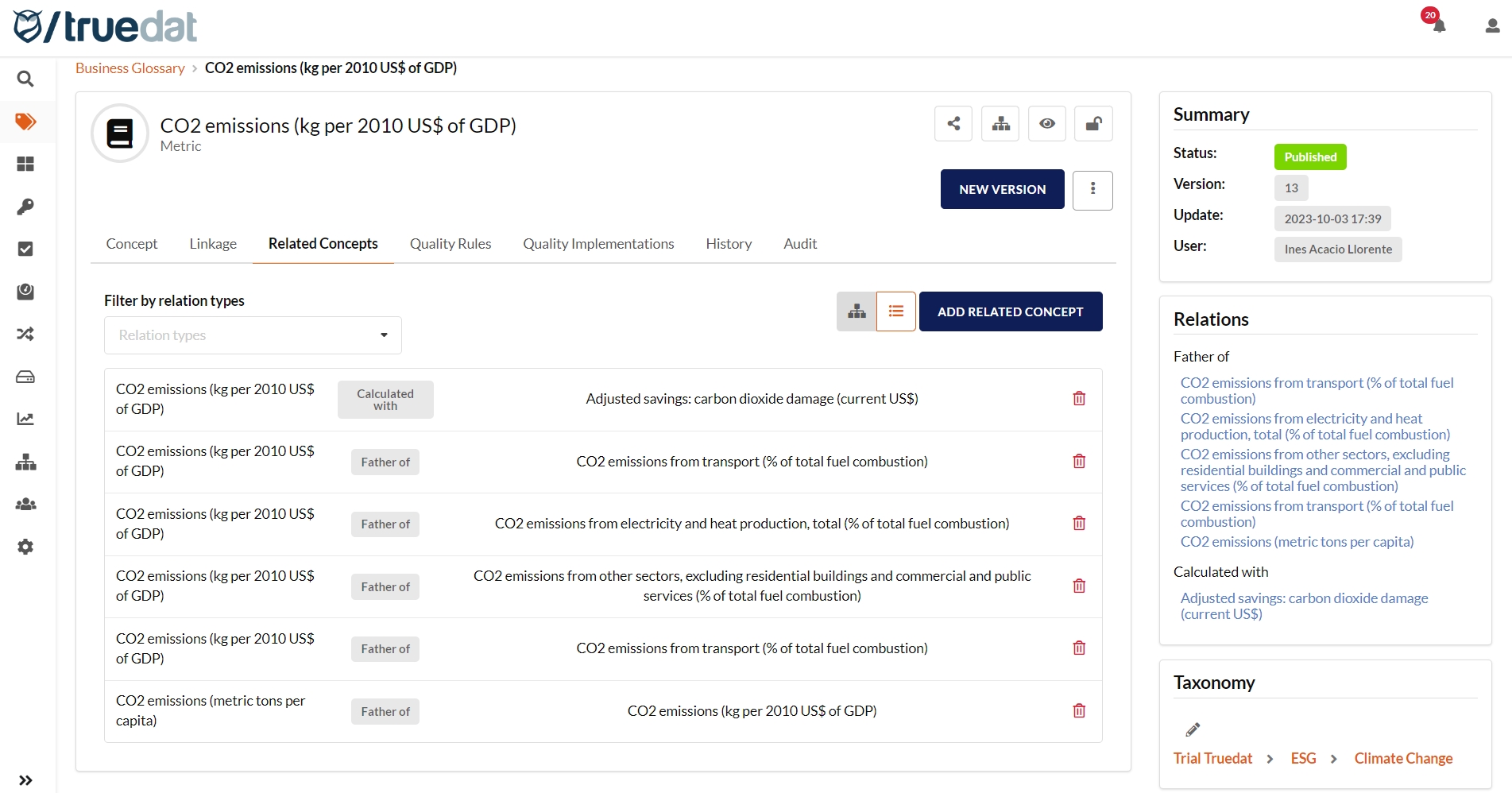
Creation of a new relationship between concepts
In the Related Concepts tab, if you have permission to link concepts you will see the button "Add related concept". Click on it, select the type of relationship if required and search for the concept to be linked. If you want to link multiple concepts in one go, use the option Links Manager.
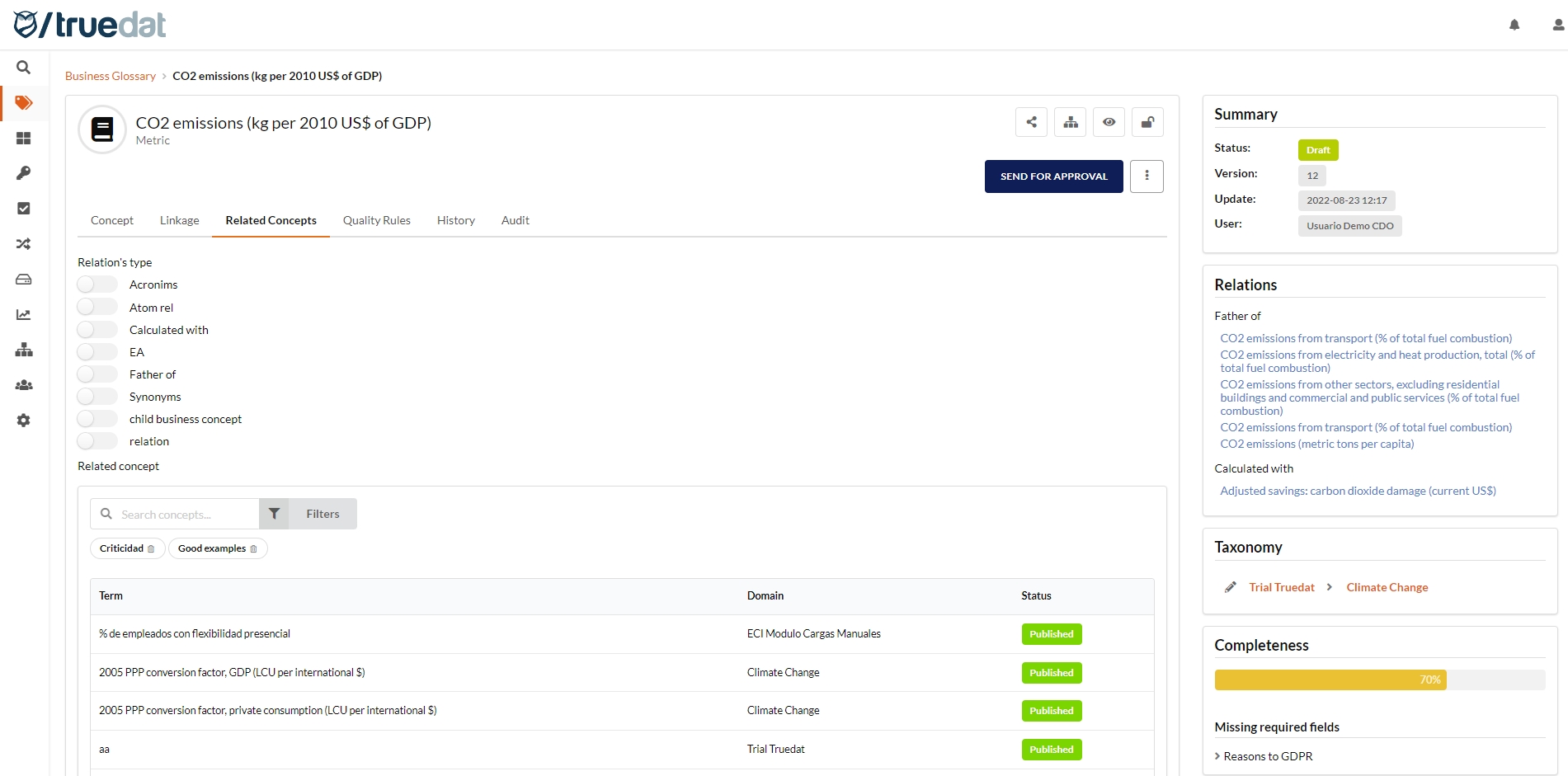
Quality Rules
In the Quality Rules tab, you will be able to create new quality rule which will be automatically linked to the concept where we are creating the rule. The concept domain will also be assigned automatically to the quality rule.
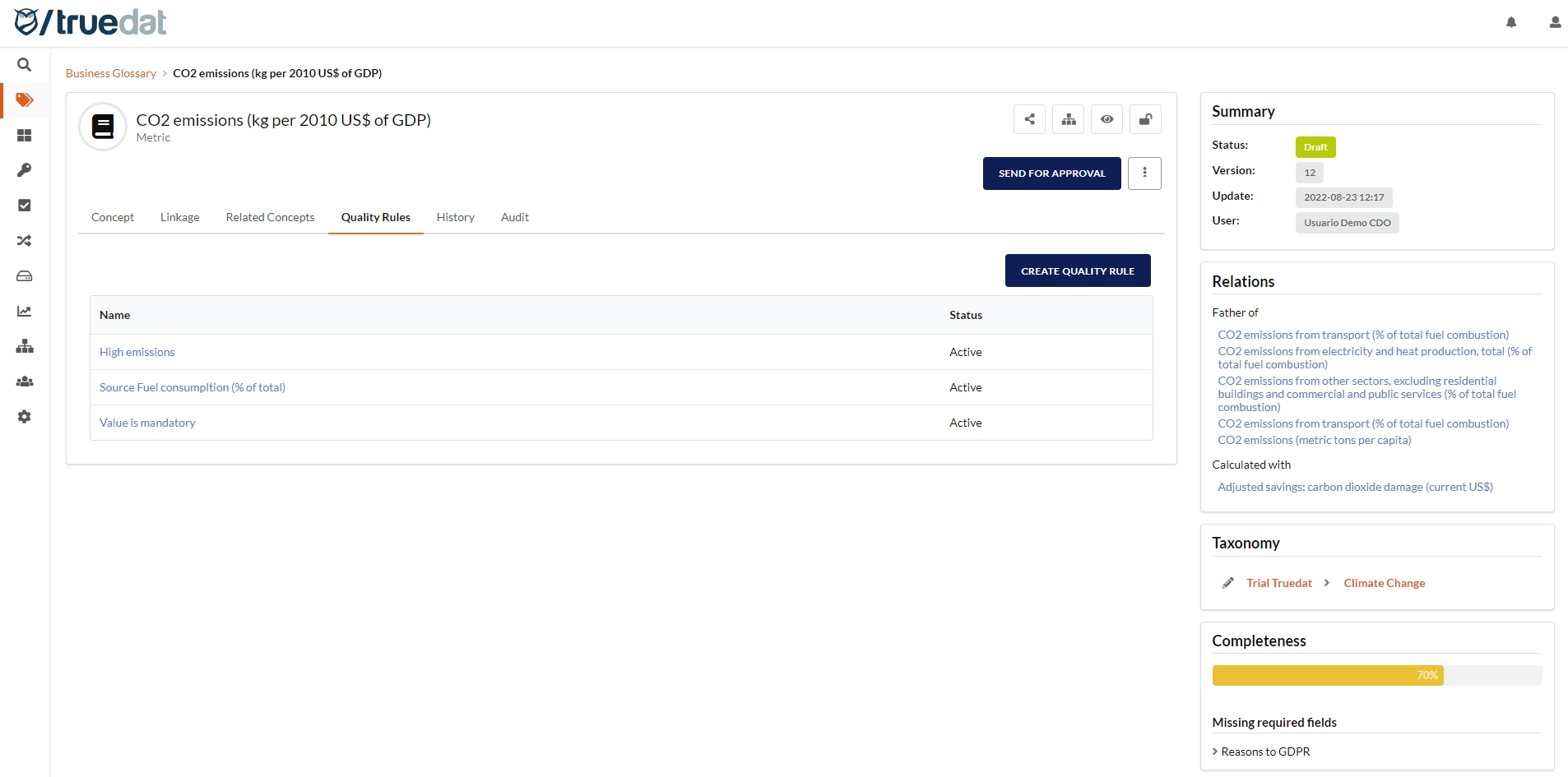
This screen displays all the quality rules related to business concepts. Clicking on a rule will show more detailed information as can be seen in the data quality section.
The "Create quality rule" button allows you to generate a new rule related to the business concept and you will reach this screen:
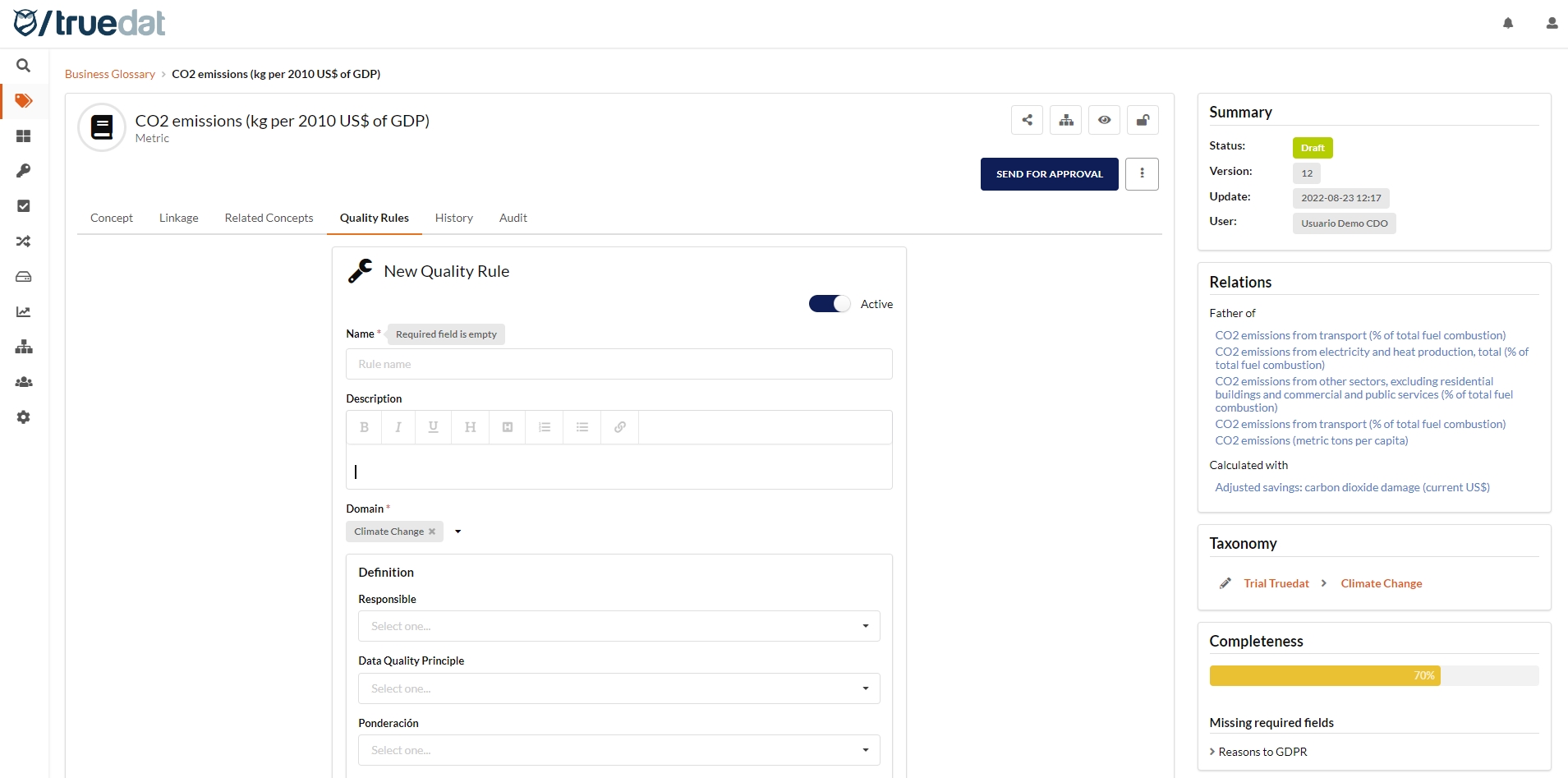
Concept History
In the History tab we can check all the versions that have been published or are currently being worked on.
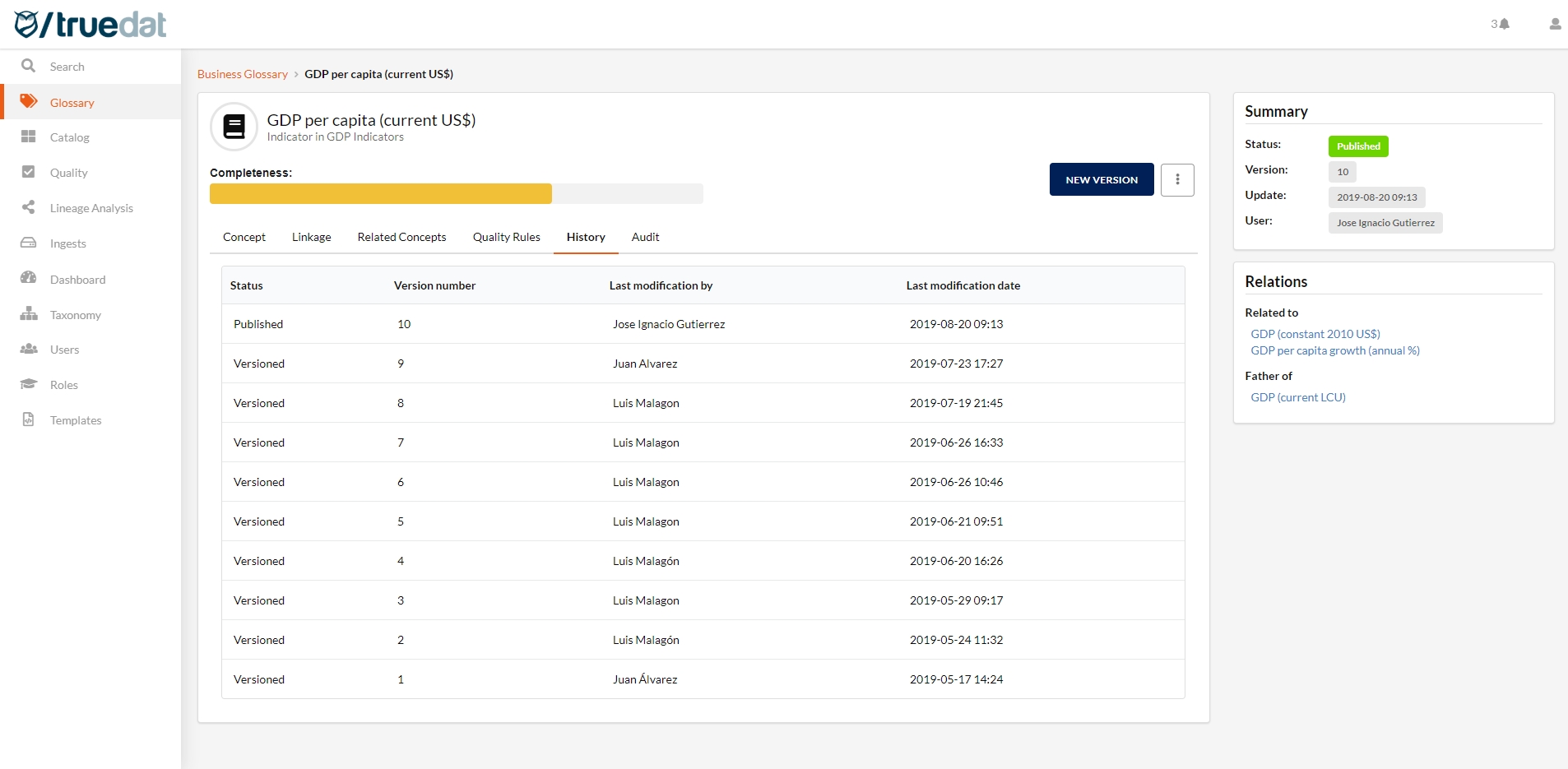
Clicking on a record will show the information about that version, allowing you to check what data the concept had at that time.
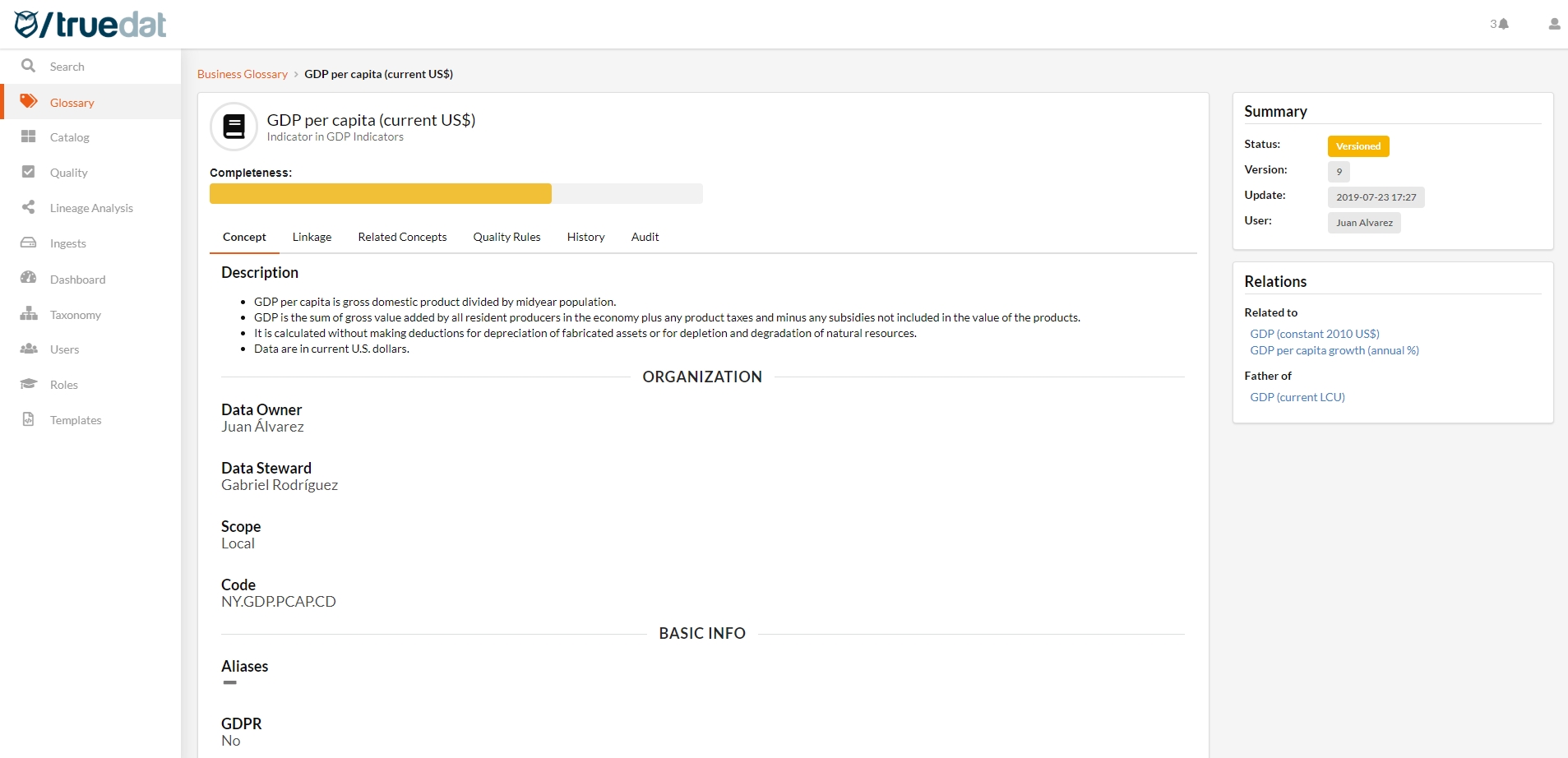
Audit
Lastly, the Audit tab shows the details of all the actions and related changes on the concept. You can see what, when and by whom.
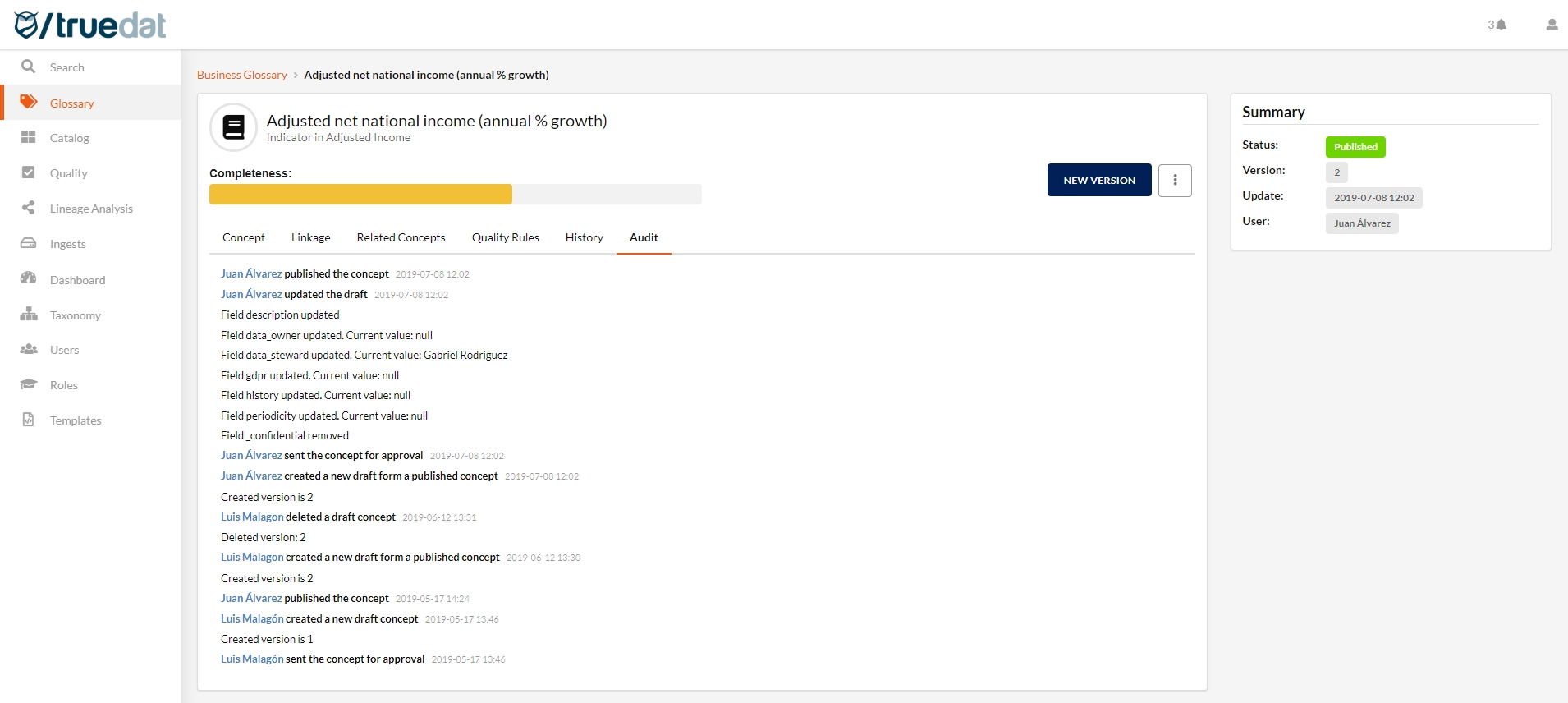
Links manager
If you need to link concepts to multiple data structures and other concepts, you may use the Links Manager option.
Go to the menu option "Links manager" under the "Glossary" module. Select the type of link you want to create, either to data structures or to other concepts. The select the type of relationship if applicable. On the box on the left-hand side search and click on the concept and on the box on the right-hand side click on the structures/concepts to be linked. Once you click, the link will be created and if you click on a structure/concept already linked, the link will be removed.
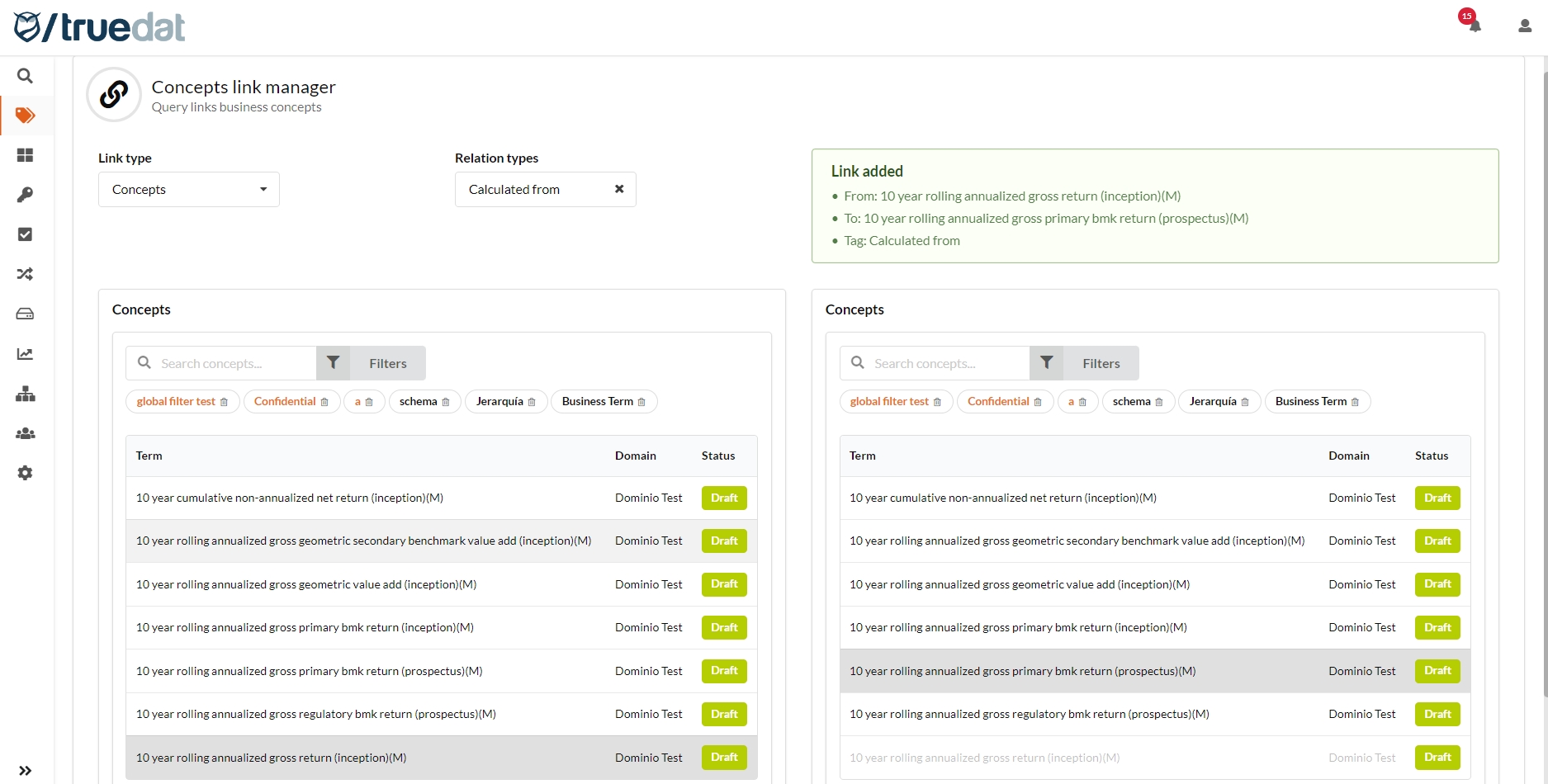
Concept sharing between domains
This feature is focused on multiorganization installations in which multiple glossaries are managed. Usually in this cases there is a corporate domain where cross Business Concepts are defined. Using the sharing functionality users with the corresponding permissions will be able to share with other domains. This will allow any user with permission to view concepts in the shared domain to see this particular concept.
A concept may be shared with multiple domains
